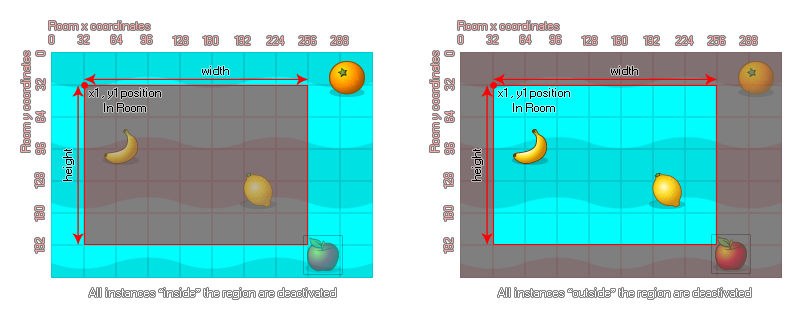
instance_deactivate_region(left, top, width, height, inside, notme);
| Argument | Description |
|---|---|
| left | The x coordinate of the left of the rectangular region to deactivate. |
| top | The y coordinate of the top of the rectangular region to deactivate. |
| width | The width of the region to deactivate. |
| height | The height of the region to deactivate. |
| inside | Whether to deactivate instances on the inside of the region (true) or the outside (false). |
| notme | Whether to exclude the calling instance from deactivation (true) or not (false). |
Returns: N/A
With this function you can define a region within the room to
deactivate instances that have previously been activated. This
region can either be flagged as "inside" or "outside" as
demonstrated in the following image: 
You can see in the image above that the "apple" instance is
always inactive because, even if the sprite itself doesn't overlap
the region, the bounding box does. So, instances are considered to
be within the region specified when their bounding box
overlaps with it, and the state of the collision mask (precise or
not) is not taken into consideration.
NOTE: If you deactivate an instance on room start (ie:from the room creation code, or from an instance create event of an instance within the room) all instances that are placed within the room from the room editor will still run their create event before being deactivated.
WARNING: Deactivating instances that have physics enabled will NOT stop their fixtures from interacting within the physics simulation. For that you should set their phy_active variable to true or false as you activate/deactivate the instances.
instance_activate_all();
instance_deactivate_region(view_xview[0] - 64, view_yview - 64,
view_wview[0] + 128, view_hview + 128, false, false);
The above code activates all instances and then deactivates a region within the room.